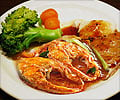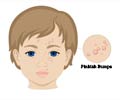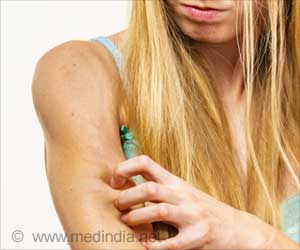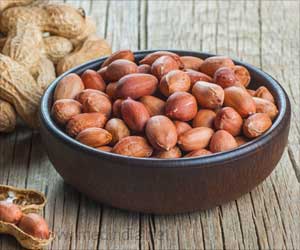A team of Dutch researchers has said that occurrence of wheezing in childhood is not linked with the number of viral infections during infancy.

"Viral infections in infancy, particularly rhinovirus, are thought to be a risk factor for later asthma development, but it is unclear whether this association is due to the viruses themselves or whether rhinovirus-associated wheeze is merely an indicator of disease susceptibility," said Anne van der Gugten, MD, a researcher at the University Medical Center Utrecht. "Accordingly, we examined the association between viruses during the first year of life independent of symptoms and the subsequent development of wheezing symptoms in childhood."
The results of the study will be presented at the ATS 2012 International Conference in San Francisco.
In the prospective, population-based birth cohort study, 96 children were followed from infancy through age four. Nose and throat swabs were collected at the beginning of every month during the first year of life, independent of the occurrence of symptoms. Pre-symptomatic lung function was assessed at the age of two months using the single occlusion technique.
Of 96 children, 13 (13.5%) had wheezing illnesses at age four. Compared to children without wheezing at age four, those with wheezing had decreased neonatal lung function. Children with wheezing at age four had a median of four human rhinovirus (HRV) infections in their first year, compared with a median of five among children without wheezing.
Neither the number of HRV infections in infancy nor the number of viral infections in general were associated with an increased risk of wheezing at age four. While a higher number of viral episodes with wheezing or a higher number of HRV episodes with wheezing was associated with an increased risk of wheezing at age four, these associations were not significant after adjustment for neonatal lung function.
Advertisement
"Our study is the first to examine the association between viruses in infancy independent of symptoms and wheezing symptoms in childhood," said Dr. van der Gugten. "Our findings indicate that viral infections by themselves may not be associated with the development of asthma, but that children with reduced neonatal lung function are prone to experience wheezing during viral infections in infancy and to have asthma in childhood."
###
"Viral Infections During Infancy And Wheezing In Childhood" (Session D26, Wednesday, May 23, 2012: 8:15-10:45 a.m., Room 3009, Moscone Center; Abstract 26987)
* Please note that numbers in this release may differ slightly from those in the abstract. Many of these investigations are ongoing; the release represents the most up-to-date data available at press time.
Abstract 26987
Viral Infections During Infancy And Wheezing In Childhood
Type: Scientific Abstract
Category: 01.21 - Pediatric Epidemiology: Risk Factors, Outcomes and Management (PEDS)
Authors: A.C. van der Gugten1, M. van der Zalm1, B. Wilbrink2, J.B. Eising1, T.J.M. Verheij1, C.S.P.M. Uiterwaal1, C.K. van der Ent1; 1University Medical Center Utrecht - Utrecht/NL, 2National Institute of Public Health and the Environment (RIVM) - Bilthoven/NL
Abstract Body
Rationale
It is supposed that viral infections, especially rhinovirus (HRV), are a risk factor for later asthma development. Whether the virus causes asthma, or whether wheezing during virus infections is a first sign of a child prone to develop asthma, is not completely understood. To our knowledge, no study until now studied the association between the presence of viruses independent of symptoms during the first year of life and wheezing symptoms in childhood.
Methods
In a prospective population-based birth cohort study nose and throat swabs were collected during the first year of life at the start of every month regardless of respiratory symptoms. Polymerase chain reaction was used to detect an extensive panel of respiratory pathogens. Lung function (single occlusion technique) was performed before the age of 2 months before any respiratory symptoms occurred. Information about wheezing illnesses was collected from the electronic patient file. Wheezing at age 4 was defined as at least one doctor''s visit or drug prescription for wheezing illnesses in the fourth year of life. Only children with at least 8 swabs and 48 months of follow-up were taken into account.
Results
140 children started the study and 1425 samples were collected during the first year of life (245 symptomatic (85% virus-positive) and 1180 asymptomatic (51% virus-positive)). 96 children had complete follow-up (22 moved during the first 4 years of life and had no complete patient file, parents of 22 children collected less than 8 swabs). 13 (13.5%) children had wheezing illnesses in their fourth year of life. These children had a decreased neonatal lung function compared to the no-wheezers. Children without wheezing at age 4 had a median of 5 HRV detected in their first year of life compared to a median of 4 in children with wheezing (p=0.645). The number of viral infections in general or HRV infections was not associated with the risk of wheezing at age 4. A higher number of viral episodes with wheezing or HRV episodes with wheezing was associated with an increased risk of wheezing at age 4 (OR 1.6, p=0.048; OR 1.9, p=0.026, per episode). After adjustment for neonatal lung function the associations were not significant anymore.
Conclusion
The number of viral infections during the first year of life is not associated with wheezing in childhood; viral illnesses with wheezing during infancy predict wheezing in childhood, however part of this is due to a decreased neonatal lung function.
Funded by: The Netherlands Organization for Health Research and Development, the University Medical Center Utrecht and an unrestricted research grant from Glaxo Smith Kline
Source-Newswise














